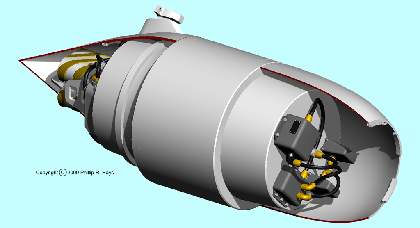
The W-30 nuclear warhead for the Talos missile was a second generation implosion device. Drawing from experience from nuclear testing in the late 1940s and early 1950s, the design was created by the Los Alamos Scientific Laboratories. It was much smaller than the first generation implosion warheads that evolved from the Fat Man plutonium bomb that was dropped on Nagasaki, Japan, in 1945. It was developed in the mid-1950s as a multi-purpose device. The W-30 was used as the nuclear warhead for the TALOS missile, in the Army's Special Atomic Demolition Munitions (SADM), and as a trigger for thermonuclear warheads.
The W-30 was intended to be a lightweight warhead. It had to be small enough to fit inside the 22 inch diameter Talos warhead casing. The design incorporated several new features that gave it "more bang for the buck." For more information about these design features see the how nuclear weapons work page.
The first of these enhancements was an oralloy pit. Oralloy was a highly enriched uranium alloy (94% U235, 5% U238 and 1% U234). This made possible a smaller and lighter weight "pit" at the center of the device and a lighter weight explosive lens system.
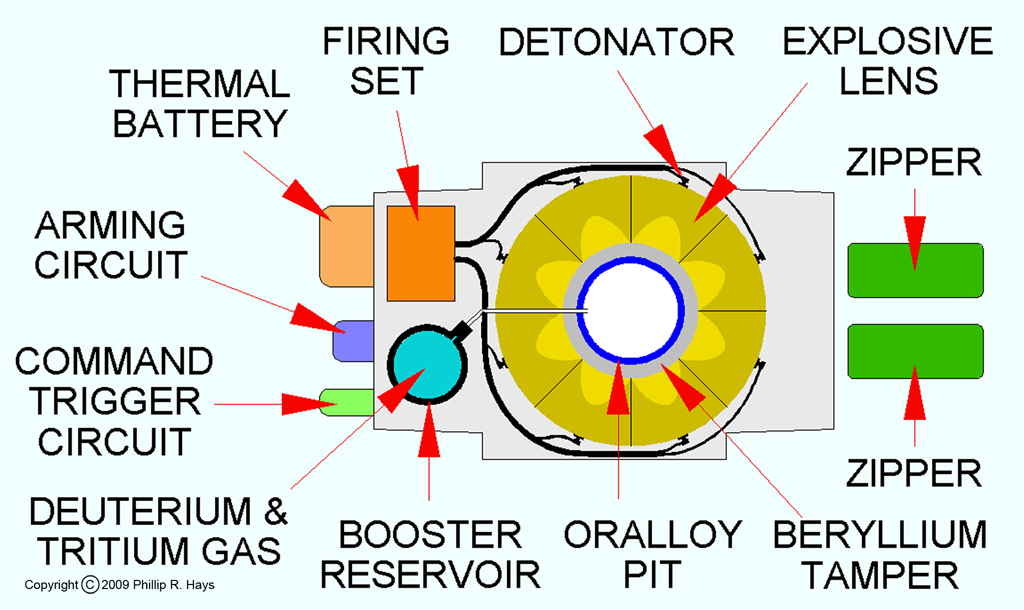
The nuclear device used a spherical implosion system, with the hollow oralloy pit at the center. This was surrounded by a beryllium shell - beryllium was a neutron reflector that would reduce the number of neutrons that escaped the "assembly" during the nuclear explosion. The beryllium shell also served as a tamper to retard the expansion of the explosion and prolong the time for uranium atoms to fission. Surrounding the tamper was the high explosive lens system that produced the spherical implosion. This was detonated by a firing set that triggered detonators on the explosive lenses. Power for the firing set came from a high energy thermal battery. The battery was inert during storage, but when the warhead was armed a pyrotechnic "match" melted the electrolyte to activate the battery. Thermal batteries can be stored indefinitely with no loss of power. The warhead contained an Environmental Sensing Device (ESD) in the arming circuit that prevented nuclear detonation until specific conditions were met, such as the high acceleration during launch, time delay after launch, booster separation, etc.
The W-30 was the first weapon to use an external neutron pulse generator initiator (called a "Zipper"). The W30 used a relatively small amount of fissionable material and that meant fewer spontaneous fission events. This made the chain reaction that was necessary for a nuclear explosion more unpredictable. Timing of the initiation of the chain reaction was extremely important and had to occur within a very short time frame just as the implosion compressed the oralloy pit. To increase the probability that the chain reaction would start at the right moment the imploding pit was irradiated with bursts of neutrons from two Zippers. This flood of neutrons started many chain reactions within the "assembly" causing much more of the uranium to fission before the explosion blew the bomb apart.
The warhead was equipped with a fusion "booster" to enhance yield. A reservoir in the warhead contained pressurized deuterium (H2) and tritium (H3) gas. Prior to detonation the gas was transferred from the reservoir to the hollow oralloy pit. The heat of the fission reaction caused fusion of these hydrogen isotopes, releasing a second burst of neutrons. This caused even more uranium atoms to fission, creating a much more efficient nuclear reaction, doubling the yield. Only a small percent of the total explosion energy was contributed by the fusion reaction.
The new XW-30 design was tested in five above ground explosions at the Nevada Test Site (NTS). Operation Teapot was a series of weapons tests conducted in 1955. Two tests of the XW-30 warhead were conducted. After these tests the warhead was redesigned to be even smaller and lighter. In the Operation Plumbob tests in 1957 three XW-30 development shots were fired.
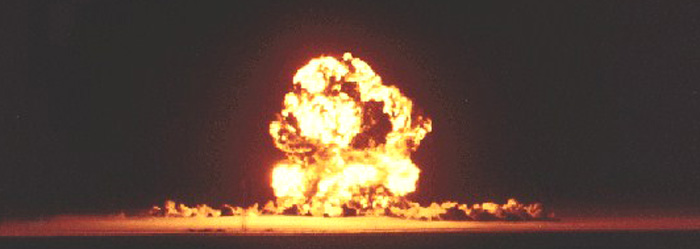
Teapot-Moth
Teapot-Moth was detonated at 5:45 AM PST on 22 February 1955 on a 300 foot tower at NTS Area 3. It was a test of the unboosted fission warhead, and generated a yield of 2 Kilotons (Kt). The predicted yield was 4 Kt. This was the first test of an external neutron pulse generator initiator. The 445 pound warhead was the lightest nuclear warhead detonated up to that time. The nuclear device was 23 inches diameter and weighed 375 pounds.
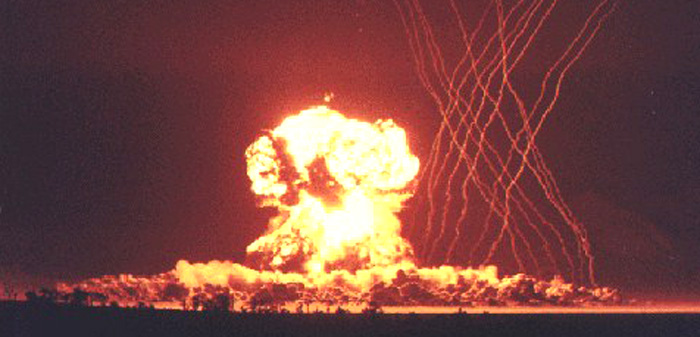
Teapot-Hornet
Teapot-Hornet was detonated at 5:20 AM PST on 12 March 1955 on a 300 ft tower at NTS Area 3a. This was a test of the boosted XW-30 warhead, with a sealed pit containing deuterium-tritium gas and an external initiator. The maximum predicted yield was 10 Kt, and the actual yield was 4 Kt. Total weight was 500 pounds, with a warhead weight of 460 pounds.
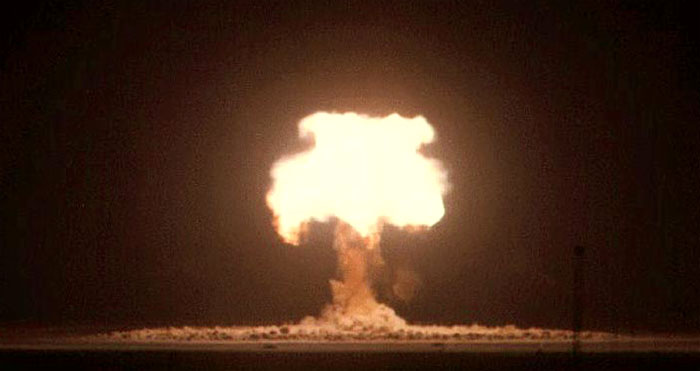
Plumbob-Franklin
Plumbob-Franklin was fired at 3:55 AM 2 June, 1957 from a 300 foot tower in NTS Area 3. It was 20.8 inches diameter and 38.4 inches long, with a nuclear device weight of 303.8 pounds and a total weight of 448 pounds. It used a combination of PBX 9401 and PBX 9404 high explosives in the implosion system. This was a boosted oralloy design with a predicted yield of 2 Kt. The shot fizzled, generating only 0.14 Kt.
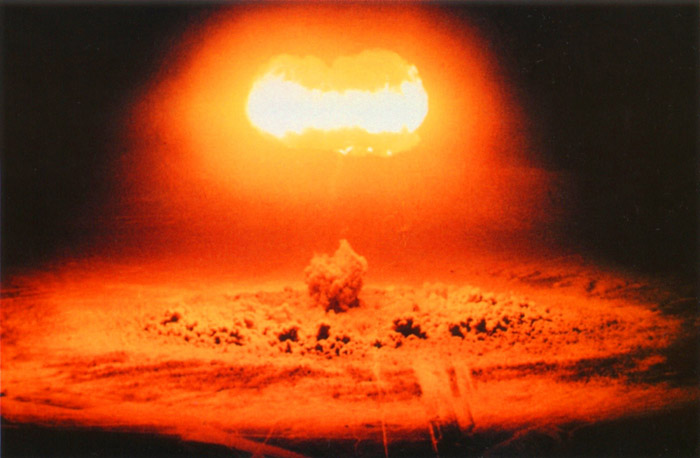
Plumbob-Stokes
Plumbob-Stokes was conducted at 4:25 AM PST 7 Aug 1957 at NTS Area 7b, suspended from a balloon at 1500 ft altitude. It had a predicted yield of 10-20 Kt, and an actual yield of 19 Kt. It was 22 inches diameter and 45.8 inches long. The nuclear device weighed 317 pounds and the entire warhead weighed 448 pounds.
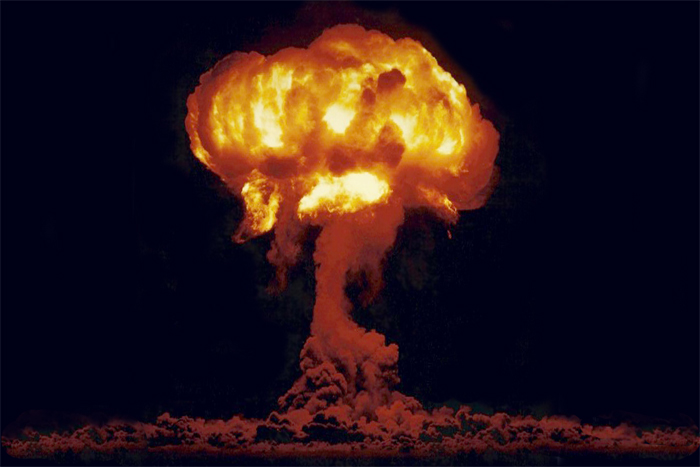
Plumbob-Franklin Prime
Plumbob-Franklin Prime was detonated at 4:40 AM PST 30 August 1957 at NTS Area 7b, suspended from a balloon at 750 ft altitude. This was a retest of the Franklin device with additional U235 added to the pit. It used PBX 9010 and PBX 9404 explosives in the implosion system. The diameter was enlarged to 21.4 inches, the length was 45.8 inches, and the nuclear device weighed 304 pounds. The predicted yield was 2 Kt and the actual yield was 4.7 Kt.
The Franklin devices were the Talos W-30 warhead precursors. A light weight warhead with lower yield was desired for this missile because it was to be fired in the vicinity of friendly ships. Its purpose was to damage or destroy hostile aircraft and missiles, blind enemy pilots and disrupt electronic systems. This could be accomplished by a relatively small high altitude blast that would have lower impact on surface ships. The Talos W-30 has often been reported to have a yield of 4.7 Kt, but my recollection from W-30 training classes is that the warhead was deployed with a yield of 0.5 Kt. Three hundred Talos W-30 warheads were produced between 1959 and 1965. Three versions were built, Mod 1, Mod 2 and Mod 3. All were removed from service in 1979.
A slightly different design, the 22 inch diameter and 317 pound Plumbob-Stokes warhead, was a test of the more powerful W-30 SADM device. It was intended to destroy enemy installations or to block key transportation points for enemy armor and motorized infantry. The higher yield was necessary because it would be detonated at ground level where most of the blast energy would be dissipated in the atmosphere above the explosion. The SADM was deployed with two yields, 4.7 Kt and 19 Kt. It is sometimes reported to have had yields of 0.3 Kt and 0.5 Kt - I think these are actually references to the Talos W-30 warhead yield. Three hundred SADMs were manufactured.
The W-30 nuclear device was also the "Boa" primary for the 200 Kt W-52 thermonuclear warhead for the Army's MGM-29 Sergeant short range ballistic missile. A "primary" is a nuclear (fission) warhead trigger for the "secondary" fusion part of thermonuclear devices. Three hundred W-52s were constructed, so a total of 900 W-30 nuclear assemblies were produced (300 Talos, 300 SADMs, and 300 Sergeants).
References
1. The Nuclear Weapons Archive, http://nuclearweaponarchive.org/Usa/Tests/index.html
2. Shots Wasp to Hornet, The First Five TEAPOT Tests, 18 February - 12 March 1955, Defense Nuclear Agency, DNA 6010F, 26 November, 1981.
3. Shots Boltzman to Wilson, The First Four Tests of the PLUMBOB Series, 28 May - 18 June 1957, Defense Nuclear Agency, DNA 6008F, 28 September, 1981.
4. Shots Diablo to Franklin Prime, The Mid-Series Tests of the PLUMBOB, Series 15 July - 30 August 1957, Defense Nuclear Agency, DNA 6006F, 29 September, 1981.
